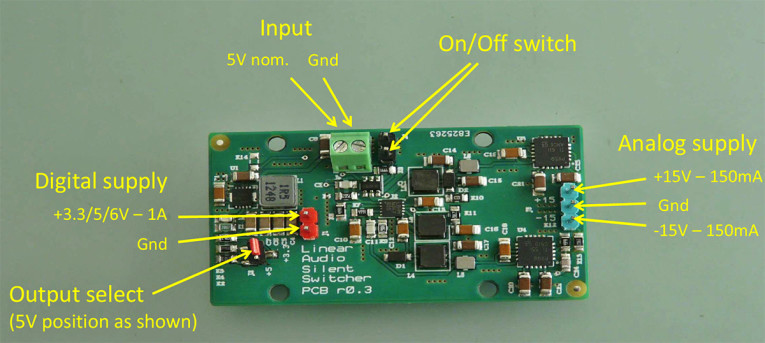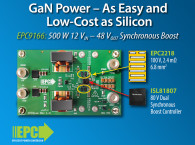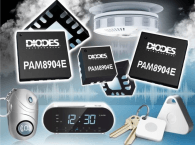
As Jan Didden explains, “It had to happen one day. I realized that my equipment was steadily getting smaller and the power supply with its transformer and rectifier and reservoir caps remained as large and looming as before. I had been looking at switched-mode power supplies before but was never quite satisfied with the performance of the units you can buy off the shelf. They just don’t worry about audio circuits the way we do! So the only remaining option was to do-it-myself.”
“I spend a few weeks studying the state of the art in switchers and realized that the situation is radically different from what I thought is was. The reason: the very high requirements for tablets and smart phones have driven switcher technology to incredible quality jumps ahead. Not only that, but linear (post) regulator performance has leapfrogged those old audio standby's (LM137/337 anyone) as well. For example, the Texas TPS7A47 linear regulator has a broadband output noise of just 4.7uV. That's micro-volts! Very, very hard to beat, even with a Superreg!”

Almost any small signal audio project will benefit from a SilentSwitcher. A RIAA phono preamp; a line preamp with or without tone controls, an active filter, buffers, cross-overs. Electronic volume controls, headphone amps; anything that have opamps in it. Opamp and discrete audio circuits almost always run at +/-15V, and even if they are designed for say +/-12V or +/-16V, they will almost always run fine at +/-15V. At 150mA it’s enough for all but the most power hungry circuits. The 6/5/3.3V output would be ideal for a DAC or streamer with a dedicated controller. The 0.5A current (up to 1A with the extra power option) goes a long way to power a dedicated unit with a display, some relays, LEDs, etc.
The SilentSwitcher is a very high performance turnkey power supply for such mixed systems. The linear post-regulators have a PSRR of over 60dB at more than 1MHz - exactly what is needed to clench what little ripple remains from the switcher. The PCB avoids excess radiation; very low impedance ground- and current paths, sort traces, decoupling caps right at the source, etcetera.

The SilentSwitcher is not a kit: Kickstarter supporters will receive a fully assembled and tested board. The SilentSwitcher outputs +/-15VDC at up to 150mA each, as well as a jumper-selected 6V, 5V or 3.3 output at up to 0.5 amp. The 6V option is handy in case you want to regulate locally to 5V or 3.3V. There are 2- and 3-pin headers on the PCB to connect the load, and a 2-pin header for an On/Off switch. The connection to the 5V source is through a B-type USB connector or a standard 2-pin screw-type connector block. The assembled and tested board will be delivered with a separate USB-B connector and 2-pin screw terminal, so users can mount the connector that fits their needs.
The SilentSwitcher runs from a standard 5V/2.1A USB charger. For total separation from the mains, it can be run from a USB PowerBank. It can also be used with anything between 3V and 10V. The start-up of the various parts of the SilentSwitcher is timed such that the inrush current doesn’t get above 2.5A, even at max load.
The SilentSwitcher Kickstarter campaign is available here: www.kickstarter.com/projects/1684029908/the-silentswitcher-mains-free-low-noise-15v-and-5v






